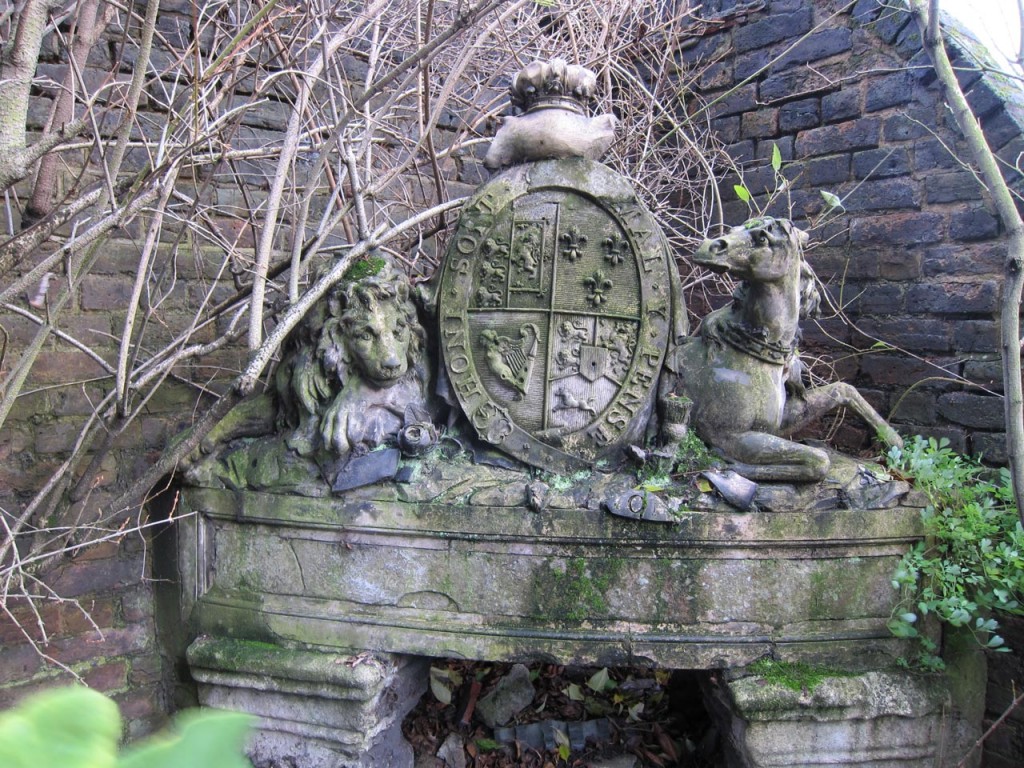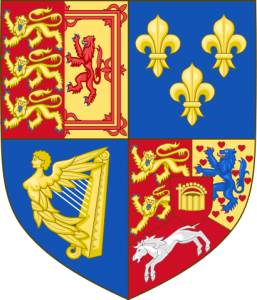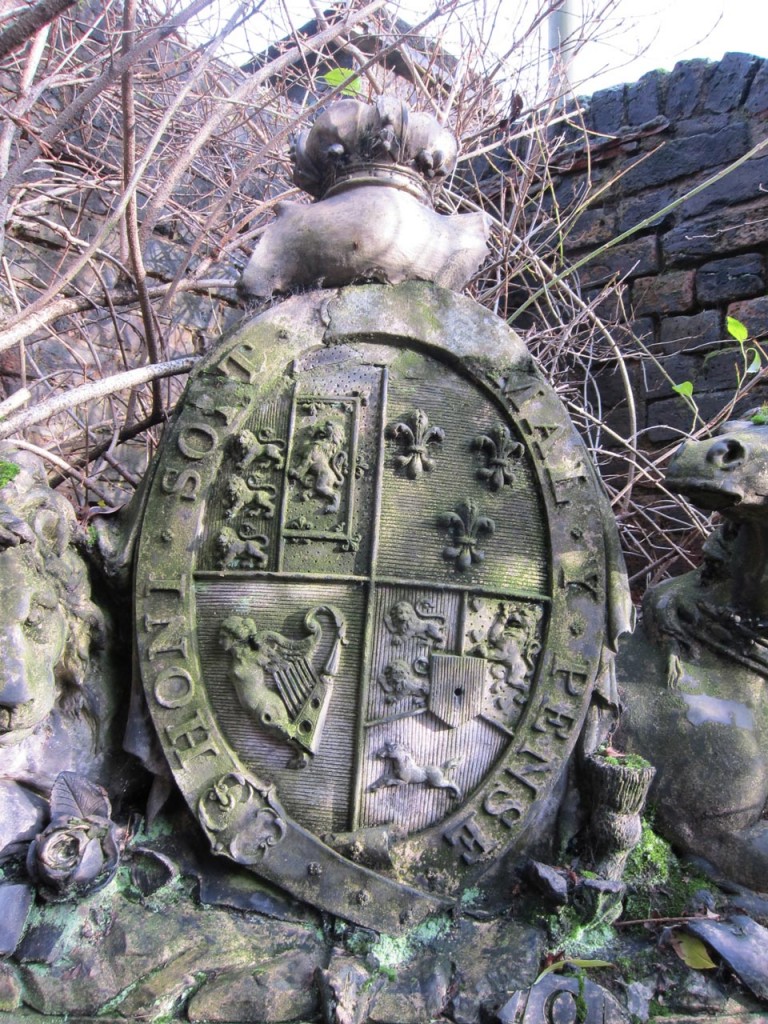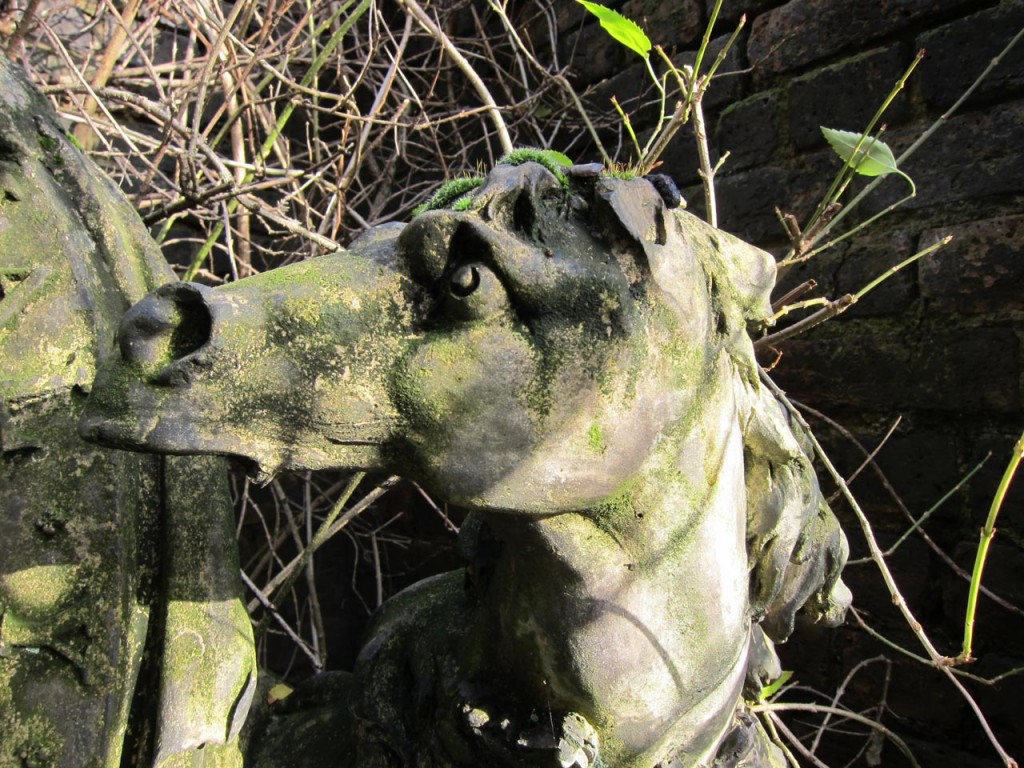
Ever since I was shown the stone coat-of-arms (above) hidden in a Shooters Hill garden I’ve been curious about what it was, where it came from and how it got there.
It looks like a royal coat of arms. The garter inscribed “Honi soit qui mal y pense” surrounding the shield shows that this is the coat of arms of a Knight or Lady of the order of the garter, and appears on royal coats of arms used in England. There is also, to my eye, a small fragment of a motto scroll under the shield with what could be the O and part of the M and N of Dieu et mon droit, which is the motto of English monarchs.
That it is a royal coat of arms has suggested to some people that the stonework originated at Shrewsbury House, which has a royal connection. Princess Charlotte of Wales, the daughter of the future King George IV, had lived there from the age of 3 in 1799 possibly until 1804, under the care of her governess Lady Elgin.
This suggestion doesn’t seem quite right to me, for a couple of reasons. Firstly because pictures of the old Shrewsbury House don’t show the coat of arms, and the style of its architecture doesn’t seem consistent with the style of the stonework. More convincingly though, the details of the heraldic symbols on the shield suggest an earlier date and an association with the first Hanoverian monarchs George I and II rather than George III and IV.


The fourth quarter of the arms is very distinctive to the first Hanoverian monarchs, as wikipedia says:
The Elector of Hanover inherited the throne following the death of Queen Anne under the provisions of the Act of Settlement 1701, becoming King George I. The fourth quarter of the arms was changed to reflect the new King’s domains in Hanover (Brunswick–Lüneburg, surmounted by the Imperial Crown of the Holy Roman Empire for the Holy Roman office of Archbannerbearer/Archtreasurer).
There is a hole in the stonework where the Imperial Crown of the Holy Roman Empire would have been; perhaps this indicates that a representation of the crown in a different material was fixed to the arms. The fleurs-de-lis in the second quarter are a reminder of the English monarchs’ claim the French throne, going back to King Edward III. The later Georges dropped this claim and removed the fleurs-de-lis from the arms.
This coat of arms was used from 1714–1800 when the union of the Kingdoms of Great Britain and Ireland necessitated a major change. The old Shrewsbury House was built in 1789 when these arms would have been current, but there isn’t a known royal connection there until the princess in 1799.
If not Shrewsbury House where else could the stonework have come from? Most of the mansions and grand houses of Shooters Hill seem to have been built in Victorian times, in the middle of the 19th century, and where there are photographs there is no sign of the Hanoverian royal coat of arms. I’ve checked pictures of Castlewood House, Falconwood House, Warren Wood, Jackwood and Shrewsbury House and none of them show stonework like that in the image above. Colonel Bagnold mentions a couple of older residences. One was Broom Hall, built by John Lidgbird in 1733, which he describes as “a handsome Georgian house”, demolished in 1937. He doesn’t mention a royal connection, and I haven’t found any pictures other than the colonel’s sketch of a set of shutters with John Lidgbird’s initials written in clout nails. Blomefield House, just to the west of Broom Hall, appears to have been in existence in 1720 and got its name from General Sir T. Blomefield who lived there and was Superintendent of the Royal Gun Factory from 1780. Again no royal connection, and no images of the house. However both these older properties are worth following up as possible sources for the arms.
Our first Hanoverian, George I, is credited with founding the Artillery in 1716 when he issued a Royal Warrant to set up two permanent field artillery companies of 100 men each based at Tower Place in the Royal Arsenal at Woolwich, so I wondered whether the coat of arms could have come from one of the many historic military buildings in Woolwich that have since been demolished. On the 1866 Woolwich OS map there is a Royal Marines Barracks on Frances Street, known as the Red Barracks, then nearby the Cambridge Barracks and also a Royal Engineers Barracks, the Grand Depot Barracks, between Woolwich New Road and Love Lane where the Tesco monolith now stands. However the dates of these buildings are 19th century, after the first two Georges, and unlikely to include their coat-of-arms.
So no final answers to my questions about the cost-of-arms, yet, but there’s some interesting lines to follow up on.

It may be of interest to you, but I have the death certificate of a distant relative lists her place of death as Nursing Home, Blomefield House, Shooters Hill in November 1921.
Thank you for your location info.